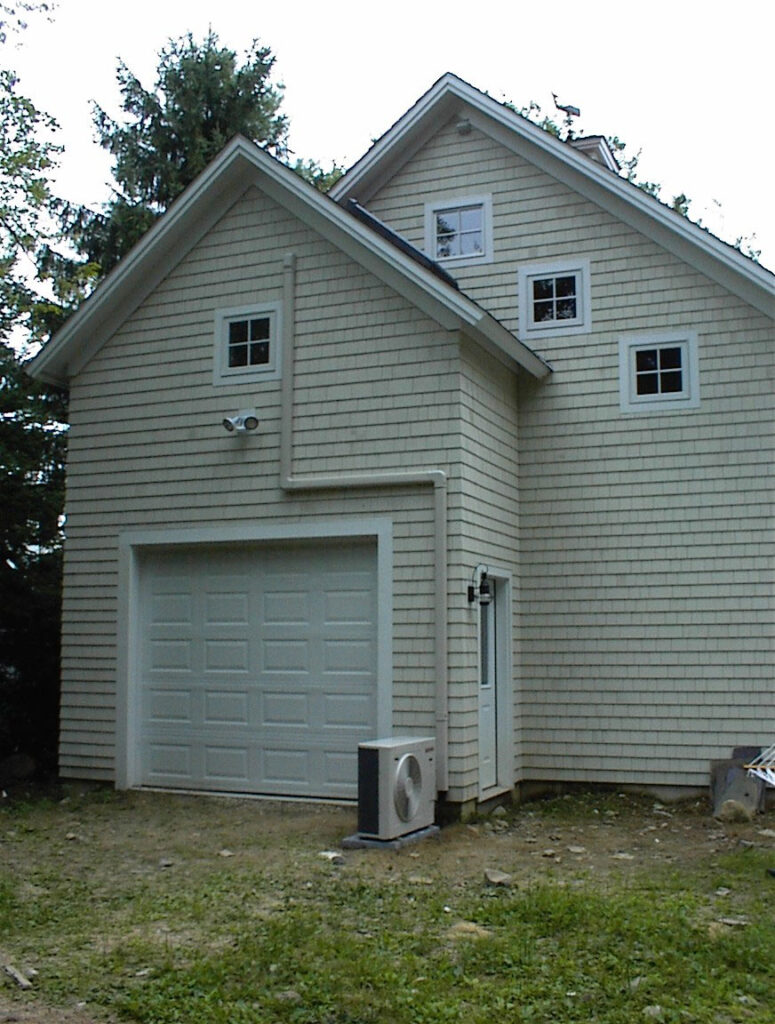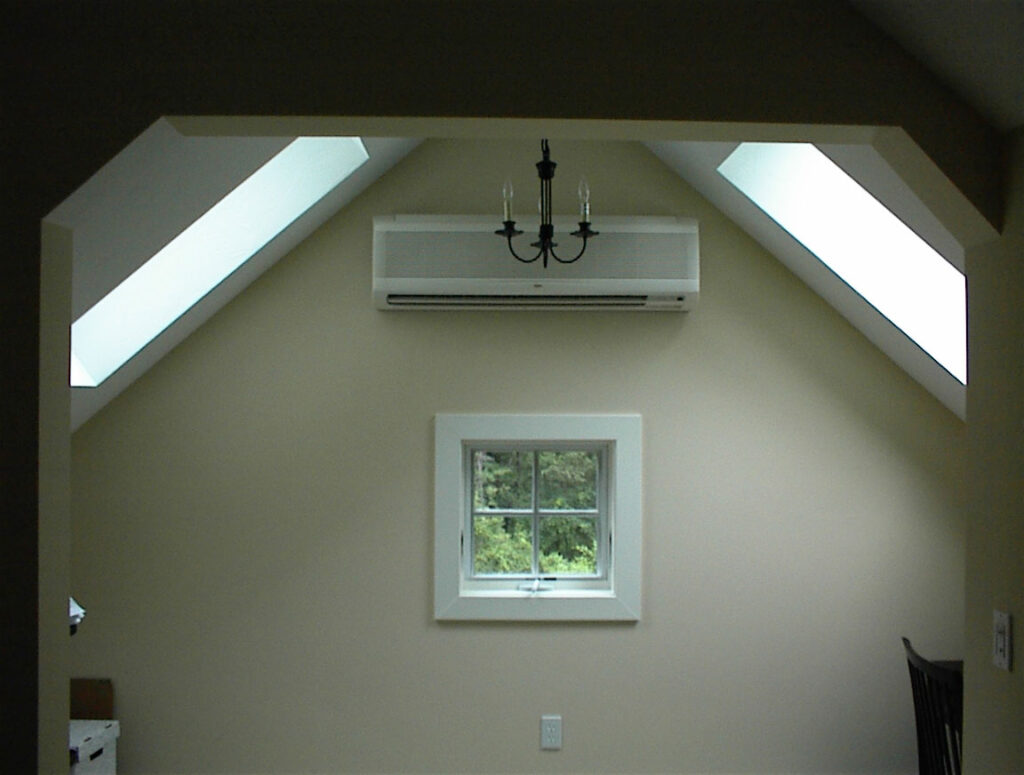
Mini-Splits, Ductless Splits… Whatever you prefer to call them, they are all the rave when it comes to heating and cooling residential and commercial spaces in 2025. “Splits” refer to air conditioning and heat pump systems that are not all enclosed in one box, like a window air conditioner and a Roof-Top Unit (RTU). A split system means there is an indoor unit and an outdoor unit. With air conditioning, the indoor unit is an evaporator, and the outdoor unit is a condenser. With a heat pump system in heating mode the indoor unit is the condenser and the outdoor unit is the evaporator, and the reverse is true when it is in cooling mode.
I’d say, in the past 20 years, mini-split heat pumps have come a long way in terms of efficiency and effectiveness. While back then, heat pumps were only effective down to around 30-degrees, today they are effective down to 0-degrees, which is one reason why most in the trade have jumped up on the bandwagon and install ductless heat pump systems. Other reasons include, they are lower cost and quicker to install than complete “central” heating and cooling systems. This works in favor with revenue and workload streams.
I have noticed over the decades that too many homeowners and commercial building owners have no idea about the important aspects of owning mini-split systems, never mind purchasing them. Things like: they are often not given a choice of color for the PVC refrigerant line concealment system on the outside walls of their building. So often, I cringe at the stark white PVC crawling up and across homes and businesses that are brown, or beige, or gray, or some other color. What happened to function and form, and aesthetics and an eye for balance, especially when it comes to color. Am I the only one who notices this?
Another thing the installers don’t tell building owners is that the indoor floor, wall and ceiling units have internal air filters that eventually need cleaning, and that these filters do not stop a large portion of particulates in the airstream. This means that, eventually, a lot of dust, dirt, pollen, mold, grease, and whatever else is in the local environment to the indoor unit, ends up clogging up the indoor unit’s coil – tightly constructed rows of thin metal fins that help to capture or release heat, depending on what mode it is in. Once these fins get dirty, heat transmission efficiency takes a nosedive and, typically, the system stops working altogether.
When a mini-split system stops working, a circuit board will have a red light that flashes in a sequence and speed. The flashing corresponds to an error in the performance of the system. Sometimes that error can be found in the back of the installation or service manual, that is, if the manual can be found at all. When it can’t, the technician needs to call the manufacturer’s Technical Support number and speak with a support staff member who is usually a technician himself with a lot of specific training in a particular product line. Quite often, it can be days, even weeks before “Tech Support” gets back to the service technician/company, and the building owner is left without the use of the system.
Then there is routine maintenance that needs to be done. Like cleaning the filters and indoor and outdoor coils and fans. Cleaning indoor equipment is often a real drag, either because the unit is high on a wall and not easy to get to, or it is installed in a way that the fan can’t be removed without the whole unit being removed from the wall and disassembled, then cleaned with an aggressive foaming cleaner. Just search on YouTube: Cleaning Heat Pump & A/C Indoor Units, or something like that and you will see various ways HVAC companies use to clean these components.
Beware! Not all HVAC company’s and their technicians are knowledgeable and honest when it comes to properly servicing these systems. There is a high percentage of YouTube videos with supposed HVAC technicians whose practices are abhorrent and often deceitful and fraudulent. And, after their service, your system is only worse for wear.
Quite a lot of the time, indoor units need to be disassembled and broken down into their main components and the unit needs to be meticulously cleaned. Otherwise, the system won’t run, or it won’t run right. Often, the cost to do proper, professional service to an indoor unit is more than the indoor unit costs the service company. Yes, it can coast as much to clean the indoor unit as a brand new indoor unit costs the company. I repeat that for affect.
Then, there’s the cheaping-out when it comes to the installation of the system. Something I never use are “line sets,” simply because they thin-walled soft copper tubing with thin-walled pipe insulation. Line-sets can easily be kinked because the copper tubing is soft, annealed copper, and too much stress/force on the copper can make it kink, which can easily go unnoticed, given, it is hidden by the isulation that covers it.
Another problem that I avoid by not using line sets: it is difficult to make short radiused bends in the tubing without kinking it, so nice looking piping can be achieved, or concealed without too much effort by the carpenter who will be hiding the piping from view. And in my opinion, it should be hidden, since I think its looks leave little to be desired. Insulation always takes away from the color of copper and the handywork of an installer who is experienced at making it all look plumb and level. Insulated refrigerant piping is just plain… “Plain Jane?” That’s being nice.
While I am sure there is a longer list of drawbacks to line-set use with mini-splits, improperly placed piping inside of PVC concealment systems can make that plastic systems not stay together, and you come outside one morning to find front covers lying on the ground or sticking into a bush, or in the road having been run over multiple times. Using a larger size concealment “duct” often prevents this from happening.
One more thing I will mention in the post regarding some downsides that aren’t typically brought to the attention of the building owner is parts availability. And this is not hyperbole, so I will say, in my own experience installing mini-split systems since 1995, good luck easily finding parts when they fail. That’s a fact! I can’t recall the last time I walked into a supply house and they had the part I needed on the shelf. Virtually every time, the part you need is at another store a hundred miles away. You get by, and with today’s overnight shipping, it isn’t usually too much of an inconvenience, but I’m not the customer who has to wait for their system to be brought back online.
These are some of the basics that I feel building owners should know before they invest in mini-split systems, rather than going for the higher priced alternative “Central Heating and Cooling Systems.” Look for my next blog post of that same name, coming soon.


